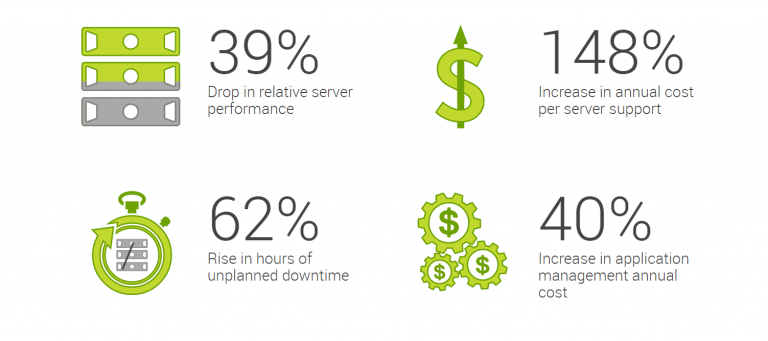Dell EMC is ready to reshape the server world. Already respective leaders in the field, it was inevitable that Dell and EMC would bring their server excellence together and deliver a new standard in the sector.

That standard has arrived in the new PowerEdge family of servers. Though these are the 14th generation in Dell’s market-leading enterprise-class servers, they mark the dawn of a new age for server technologies, built for a world where power and control are not negotiable.
The server has evolved remarkably over the past decade. Certainly looking back several decades, there is no comparison to modern machines. But even over the passing ten years there have been numerous changes to what servers can deliver.
Modern servers are expected to scale on demand, manage workloads over multiple stacks, engage with fast-changing software-driven technologies such as networks, as well as play several crucial roles in the emerging Cloud hegemony that is changing everything about how technology works.

Thus it stands to reason that a new age requires a new approach to servers. When Dell EMC emerged, it was an opportunity to revisit the server and give it the means by which to help lead the new technology era. Our new PowerEdge servers are not just about performance. They are about control – specifically how customers can get the most out of them with the least amount of hassle. No longer will you need to sacrifice operational resources in order to get next-level performance.
The 14th generation of PowerEdge servers pool the best insights and engineering from Dell EMC. But the real difference is how customer feedback was incorporated. Our clients want systems that can scale easily, provide the fundamental tools for modern systems, offer robust security and energy efficiency, all without sacrificing power. But above all, these servers must be easy to configure.
We have listened and delivered. There is no lack of power under the hood of new PowerEdge servers, driven by Intel Xeon chipsets and the latest in DDR4 memory, as well as support for flash arrays including blazing fast NVMe modules. Choice is important, especially around storage, so the new PowerEdge servers offer a range of configurations and tiered solutions. With the 14th generation, customers get exactly the high-performance fit they desire.
14 generations at your service
Built into the ecosystem are the elements that should be standard with all first-class server choices. The new PowerEdge family not only uses technologies from Dell EMC’s virtualisation, storage, security, networking and hyper-converged infrastructure partners, but it is ready to be integrated with the leading brands and applications in the market.
In addition to all of this, the new Dell OpenManage environment provides a suite of applications designed to embrace industry standards. It speeds up management and configuration tasks, and comes with full integration support for Microsoft System Center, VMware Center and BMC Software. It can be connected seamlessly to CA, Nagios, Oracle, HP, and IBM environments. Through this suite, Dell PowerEdge servers can be smoothly orchestrated in virtual, physical, local and remote environments. The agent-free operation eliminates 213 hands-on processes and configures network settings 55% faster. That is a lot of saved work hours.
The new Dell PowerEdge servers are the companions to take companies into the future. From internal workloads to hybrid cloud strategies, from line-of-business applications to experimental DevOps environments, from scaling on demand to delivering real-time data insights, the 14th generation of Dell PowerEdge servers are the muscle of 21st century companies, but with the nimble agility to leap above current server shortcomings.
Don’t ever make the choice between performance, control and improvement again. The new Dell PowerEdge servers deliver all three. Any other brand that doesn’t is just holding you back.
